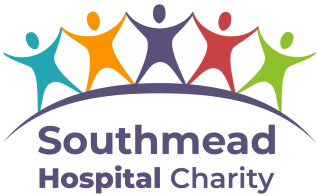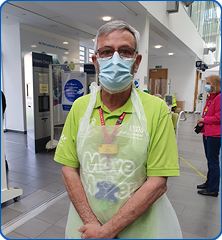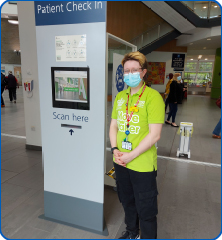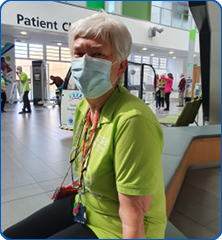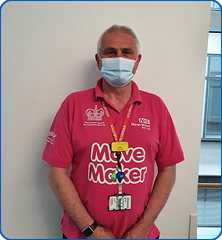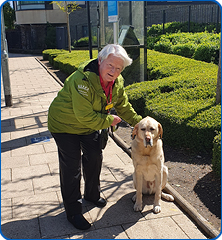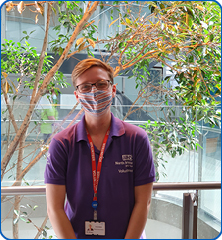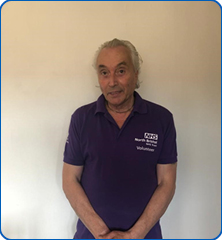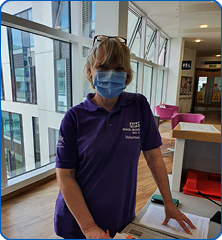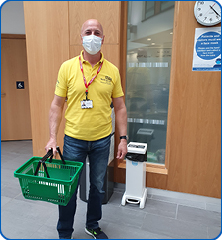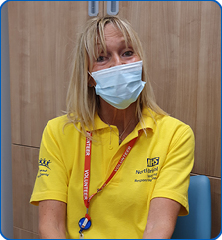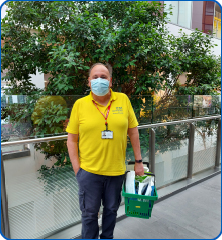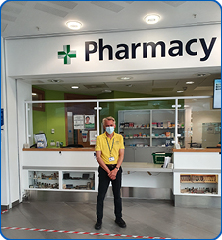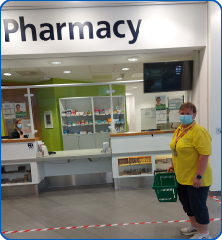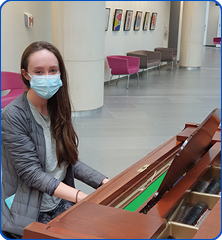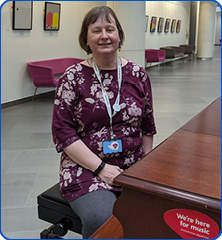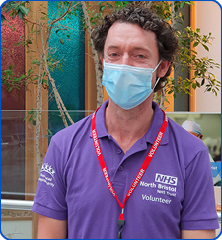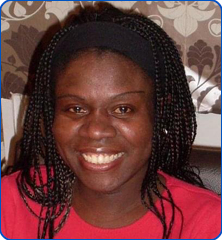Urethrogram/Peri-catheter urethrogram
Your doctor has requested that you have a urethrogram. We hope the following information will answer some of the questions you may have about this procedure.
What is a urethrogram/peri-catheter urethrogram?
This is an examination of the tube (urethra) that carries urine from your bladder to the outside of your body. Using X-ray dye, the length of the tube from the bladder to the outside will be demonstrated.
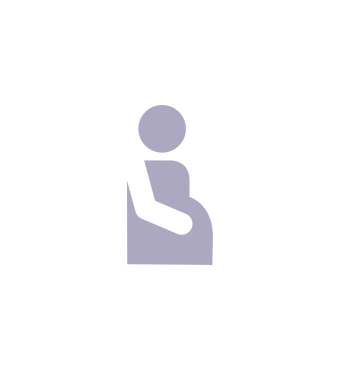
What preparation is required?
No preparation is required before the urethrogram; you can eat and drink as normal. There is no requirement to stop taking any regular medications.
The procedure uses X-rays and the amount of radiation used is very low, however if you think you may be pregnant please inform the department before attending the appointment.
What happens when I arrive?
- You will arrive at Gate 18 reception area and a member of the Imaging team will take you through to the fluoroscopy waiting room.
- A doctor or specialist radiographer will discuss the procedure with you. You will be given an opportunity to ask questions. If you are happy to proceed you will be asked to change into a hospital gown.
What will happen during the examination?
- You will also be asked your relevant medical history, including any allergies you may suffer from.
- We will ask you to lie on the X-ray table on your back.
- The area around the urethra will then be cleaned with a sterile cleaning fluid and a lubricating jelly administered.
- A small plastic tube called a catheter will be gently inserted by the doctor or specialist radiographer into the opening of the urethra and a small balloon at the end of the catheter may be inflated to keep the catheter in place if required.
- X-rays are then taken as the dye is introduced through the catheter.
- Depending on the information your referring doctor requires, we sometimes will then fill your bladder through this tube, remove the tube and then take X-rays as you urinate into a container.
- The procedure normally takes between 20 to 30 minutes.
Are there any risks or side effects to the examination?
An urethrogram is a safe examination.
- An allergic reaction to the X-ray dye is extremely rare.
- As with any bladder catheterization there is a small risk of infection. Following this examination if you find it painful to urinate or experience increased urgency in urinating or if you have a temperature, please contact your GP or 111 service as you may need antibiotics.
- If you experience any discomfort urinating, it usually resolves in less than 12 hours. Your urine may also be slightly pink after the test but it is not anything to worry about. You should see your GP or contact the 111 service if you experience any bleeding or difficulties with passing urine.
As with all X-ray examinations, we will do our best to keep the exposure to radiation to an absolute minimum.
Will the examination be painful?
An urethrogram may cause a little discomfort during catheterization.
In addition, as the dye is introduced you may have a sensation of pressure in your urethra, especially if you do have a stricture (narrowing) of that area.
When will I get the results?
You will not get an indication of the result at the time of the examination, as analysis of the images will take place after you have left the department.
The specialist radiographer and a doctor will report your examination at the earliest opportunity then make a written report. This will be sent to your doctor who requested the examination. Allow 7-10 days for the doctor to receive the report.
Is there an alternative examination?
There is no alternate examination.
Aftercare advice
At the end of the examination the majority of the X-ray dye will have been removed from your bladder, however the X-ray dye we use is sticky and you may notice this on your skin. It washes off easily.
Following the examination, you will be able to continue with your normal everyday activities including going back to work.
Privacy and dignity
At North Bristol NHS Trust we are committed to providing the best possible experience for patients, ensuring the need for privacy and dignity in a safe, caring environment. We will treat every patient as an individual and respect their cultural values and beliefs.
Sometimes tests, although necessary, can be embarrassing or undignified for patients but we will do our best to do everything we can to make you as comfortable as possible during your visit to the department.
We hope that the information on this page will answer any questions you may have but please feel free to contact us if you have any particular worries, questions or concerns.
Questions and concerns
If you have any questions, please do not hesitate to call us on the number in your appointment letter.
References
North Bristol Trust (2010) Privacy and Dignity policy
University Hospital Southampton NHS Foundation Trust (2017) Patient information factsheet, “Having a Urethrogram”
Royal Surrey County Hospital Foundation Trust (2014) Patient Information leaflet, “Male Urethrogram”
© North Bristol NHS Trust. This edition published August 2023. Review due August 2026. NBT003310.

